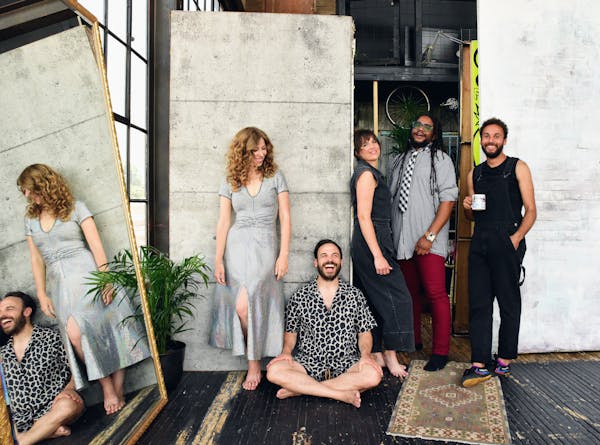It all started with a naked woman playing a cello made of ice.
In 1972, avant-garde musician Charlotte Moorman performed "Ice Music for London" wearing only a garland of flowers while playing an instrument that looked like something a refrigerator's automatic icemaker might spit out if it went haywire while you were on vacation.
American cellist Seth Parker Woods, a longtime admirer of Moorman, decided to update the concept and use it to express ideas and emotions rooted in issues of race and mental illness. So he and composer Spencer Topel created "Iced Bodies," a performance piece they'll offer at the Weisman Art Museum on Saturday as part of the Great Northern Festival.
Originally from Houston, Woods returned to the U.S. in 2016 after living in Europe for seven years. At that point, he'd already been thinking about creating his own iteration of Moorman's chilly collaboration with composer Jim McWilliams.
"It was a very heated time in this country," Woods said from Los Angeles, where he teaches at the University of Southern California's Thornton School of Music. "In the midst of that election, there was a lot of tension in the air and in the news media. I was looking around and realizing that there is a lot here to be said that is not being said."
The Falcon Heights killing of Philando Castile in July 2016 was one of a series of shootings of Black men by American police officers that contributed to that year's tension. Woods decided that police brutality would be among the issues he'd address in the work that became "Iced Bodies."
"Another thing was really looking at stigmas around mental illness and wrongful interactions between police and people with mental illness," he said.
Woods expects Saturday's event to be the final performance of a piece that he and Topel premiered in Chicago in 2017.
"At the time, I was riddled with a lot of aggression, a lot of mourning and reckoning with what is actually in front of us," Woods said. "I felt like it kept happening. Every week or every two weeks, there was another murder that was being talked about in the news or on social media. I felt the news was the death hour, constantly inundated with that, daily daily daily. I had to figure out how to grapple with it and still exist in society."
So how do Woods and Topel make music with a cello made of ice? Embedded within the cello-shaped, black-dyed block of ice are electronic elements, including microphones and speakers, which absorb and emit the sound of Woods rubbing against them with fiberglass bows and ice carving tools.
"Over time, I play [the cello] and the neck eventually comes off," Woods said. "That leaves way for this very performative act to show the headless body, but I become the head of the thing.
"So it [goes from] this kind of upright, traditional profile of the cellist to this kind of body that's there, this edifice that's evolving over time. And as the ice is stripped away from it, the sound also alters."
The speakers also unleash Woods' prerecorded voice as he recites poetry by Nayyirah Waheed, often in diffused and distorted ways. During about two hours, the black ice cello meets its destruction, but one clear voice inside of it is finally freed.
"It becomes less about me trying to atone and use the ice cello as an edifice to provide prayer for those in loss," he said. "It still is that, but it's less about me carrying that weight and more about letting people find themselves inside of the work."
And Woods departs from Moorman's presentation style: He performs it not in the nude, but wearing a frostbite-resistant wetsuit.
Seth Parker Woods and Spencer Topel: "Iced Bodies"
When: 2:30-5 p.m. Sat.
Where: Weisman Art Museum, 333 East River Road, Mpls.
Tickets: Free-$20, available at tickets.umn.edu/WAM
Rob Hubbard is a Twin Cities-based classical music writer. Reach him at wordhub@yahoo.com.

Review: Sibling pop band AJR put on a fun show in St. Paul, but not a good concert
Israelis grapple with how to celebrate Passover, a holiday about freedom, while many remain captive
A Georgia beach aims to disrupt Black students' spring bash after big crowds brought chaos in 2023
Today in History: April 18, San Francisco's great earthquake sets off fires, thousands die

